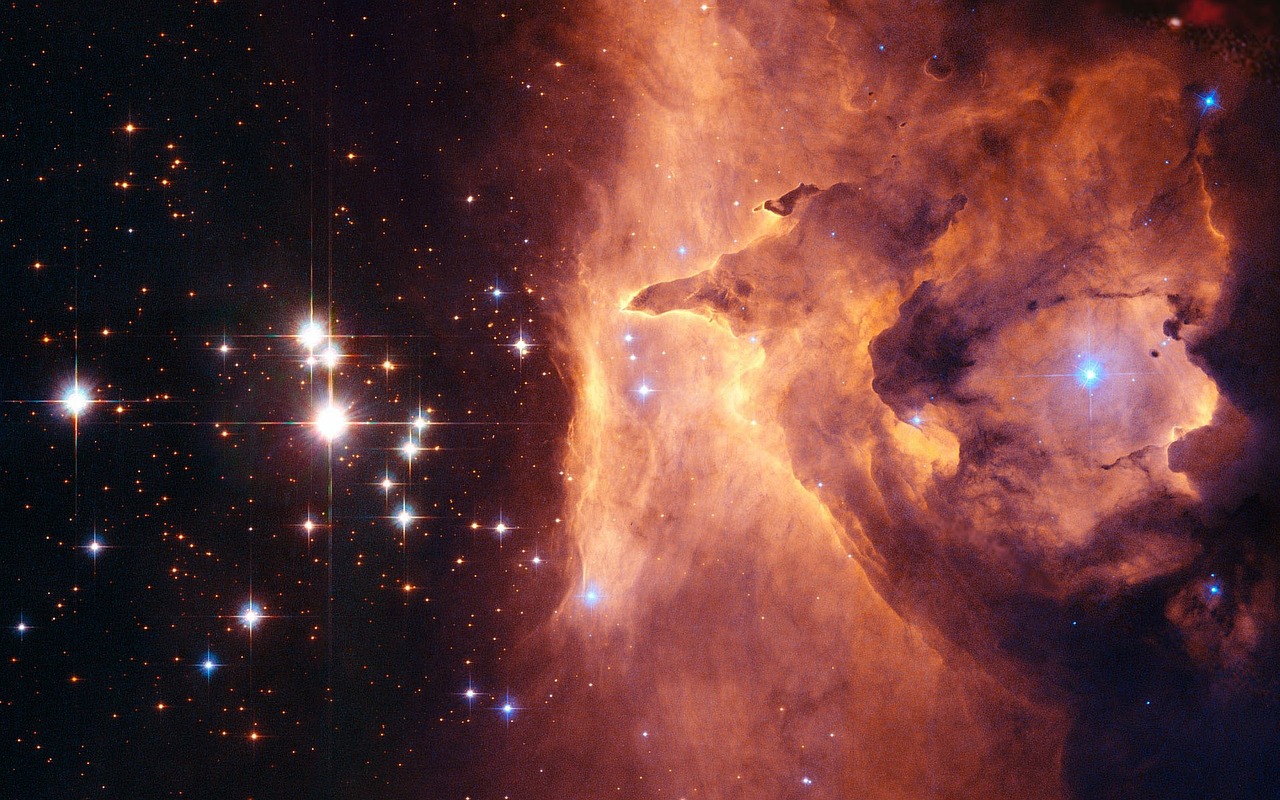
Astrosat Discovers Ultraviolet Wings of Butterfly Nebula
- News
- 3.2K
Indian astrophysicists have discovered large ultraviolet wings and jets that were hurled out from a dying star, using data from AstroSat – space observatory launched by the Indian Space Research Organisation (ISRO) in 2015.

IMAGE On the right is a false-color image of the bright ultraviolet lobes of the Butterfly Nebula, images by AstroSat. On the left is the same image in red, with a cartoon in blue marking the full extent of the newly discovered ultraviolet lobes and the jets (Credits: Rao and Sriram).
The discovery has been featured as the AstroSat Picture of the Month (APOM) for October.
Professor Kameswara Rao of the Indian Institute of Astrophysics (IIA) and his collaborators used the Ultra-Violet Imaging Telescope (UVIT) onboard AstroSat to stare at a planetary nebula called NGC 6302, popularly known as the Butterfly Nebula.
A planetary nebula is formed when a star like our Sun, or a few times heavier, is in its dying days. The term, a misnomer now, was coined by astronomers in the 19th century since the nebula looked like planets through their telescopes.
“When hydrogen and helium fuel that kept the star shining gets exhausted, the star expands in size and becomes a red giant star. Such stars shed most of their outer layers which expands outwards, and the inner core, made of carbon and oxygen, shrinks further and becomes hotter. This hot core shines brightly in the ultraviolet and ionizes the expanding gas. This glowing ionized gas is what is seen as a planetary nebula”, Prof Rao explained.
Sriram Krishna, a student of Rao, spent many hours analyzing the data from the Butterfly Nebula. “Its central star is one of the hottest that we know, at 220000 degrees. The name itself comes from the shape of the two lobes of expanding gas that look like the wings of a butterfly”, he said. One might expect a Planetary Nebula to be spherical, but it actually exhibits a range of complicated structures.
“We used the UVIT on AstroSat to make four images of the nebula, each in different ultraviolet ‘colors’, or filters. The image made with the filter centered at 160.8 nanometres, called F169M, had a surprise in store for us”, said Sriram.
Astronomers have studied the two lobes of the nebula for many years through visible light images. They expect that the more energetic ultraviolet light would be emitted closer to the central star, where the hot stellar wind hits the slowly expanding gas.
“However, we discovered that the lobes imaged with the F169M filter in ultraviolet were about three times larger than the size of the lobes imaged in visible light”, said Sriram. After careful analysis, their study concluded that this ultraviolet emission must be due to cold molecular hydrogen gas outside the visible lobes which had gone undetected so far.
“Our discovery points to an unseen companion star in an orbit with the central star”, said Firoza Sutaria, one of the co-authors. In addition, researchers discovered two faint jets blasting out from the center, at almost right angles to our new ultraviolet lobes.
The team led by Prof Rao has recently discovered a large ultraviolet halo in yet another planetary nebula using AstroSat and will be looking at many more such objects in the future. They hope that such discoveries may provide the answer to the age-old puzzle of the ‘missing mass problem in planetary nebulae’.
This discovery was made possible because of the uniqueness of UVIT. “Of all the ultraviolet telescopes in space, UVIT is special in its ability to image a large field of view with a very high resolution, or detail”, said Dr. V. Girish of ISRO. “This ability, coupled with a novel image analysis software that we had developed led us to this discovery”, explained Prof Jayant Murthy, a co-author of the paper, and Director of IIA.
These results have been published recently in the journal Astronomy and Astrophysics, co-authored by Kameswara Rao, Sriram Krishna, Jayant Murthy, Firoza Sutaria and Rakesh Mohan of IIA, Alak Ray of Homi Bhabha Centre for Science Education and De Marco of Macquarie University in Australia.
The AstroSat Picture of the Month series, or APOM, is a year-old initiative of the Public Outreach and Education Committee (POEC) of the Astronomical Society, as well as the AstroSat Training and Outreach Team. The aim of APOM is to share the excitement of AstroSat science as well as the beauty of the Universe with the public. All APOMs are archived at http://astron-soc.in/outreach/all-apoms/ (India Science Wire)
By Niruj Mohan Ramanujam
Journal Article
Planetary nebulae with UVIT: Far ultra-violet halo around the Bow Tie Nebula (NGC 40)★
If you liked this article, then please subscribe to our YouTube Channel for the latest Science & Tech news. You can also find us on Twitter & Facebook.


